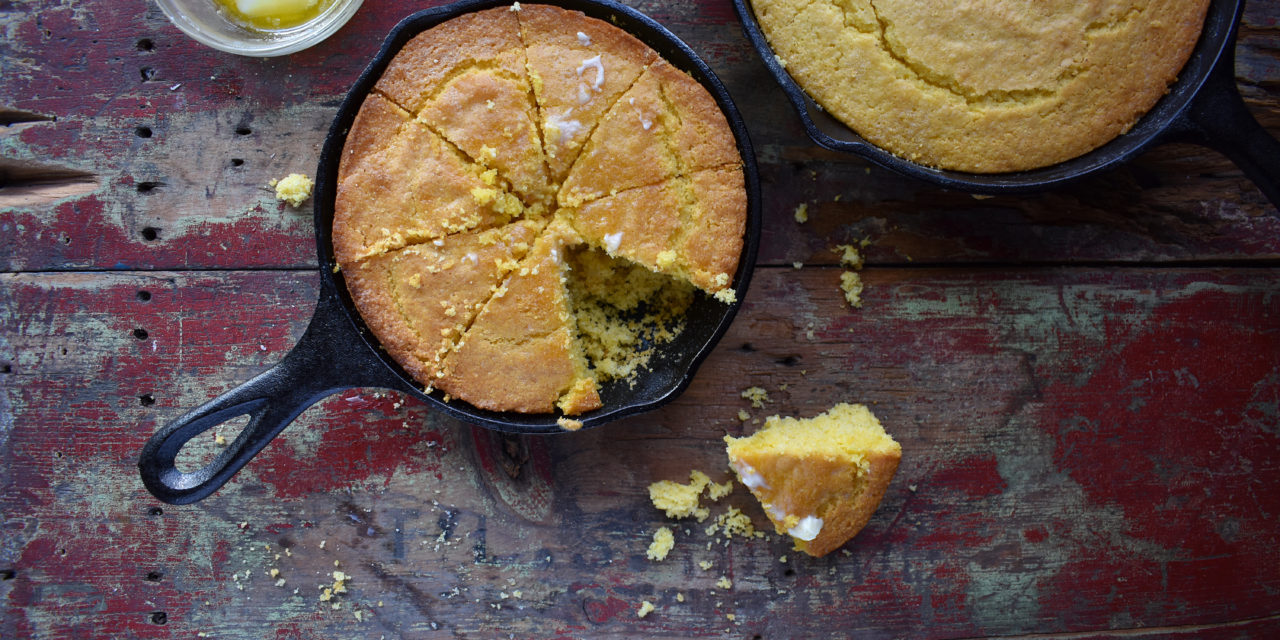I have been set free! I always felt like a failure when it came to caring for my cast iron skillets. I always washed them in hot soapy water as the German gene for cleanliness runs too deep in my soul to merely wipe something out! Several other homesteaders, all who rely on cast iron cookware and are passionate about not being test subjects for untested materials such as Teflon, tell me that you can achieve an excellent nonstick surface on your cast iron if you do a few simple steps. None of them ever wash their cast iron in the soapy water; it’s just not done.
Heirloom cast iron skillets are nonstick due to years of seasoning; the interiors are smooth as silk. My newer versions are produced by skipping the last step of polishing the bowl (interior) of the skillet. This is why my new skillets take time to develop a smooth nonstick surface.
What is seasoning on cast iron cookware? Seasoning is a way to protect the metal and keep it from rusting. A layer of fat is oxidized on the surface to create a hard, dry barrier against water and air. A thin layer of animal fat (lard) or oil, keyword here is a thin layer, is set onto the clean, dry surface of the entire pan. Then the pan is placed in a pre-heated oven at around 350 to 400 degrees Fahrenheit for an hour. The seasoning melts and bonds into the crevices of the pan creating a smooth, eventual nonstick surface on the pan. With new pieces, this surface can take some time to build, but with patience and the right care, a properly seasoned pan will be a joy to use.
I found out as I read advice from experts on cast iron that you need to clean dirty cast iron pans but some basic understanding of what seasoning is helps to clear up the myth of no soap and water. The seasoning on cast iron, while it starts as a fat, has been transformed or polymerized, that means it cannot be stripped away by gentle washing in soapy water, especially not modern day non-lye based soap.
If you talk to a non-soaper, you are cursing to even speak of using soapy water on their beloved cast iron cookware. But if you understand the nature of the seasoning on a pan, it will not be damaged by modern-day soaps, in part because we are not using harsh lye-based soaps.
A dirty pan needs cleaning, and this is where I made my mistakes when caring for my cast iron skillets. I didn’t allow my pan to dry out before I coated it with oil properly. Based on much reading on the subject, especially from Mother Earth News, I am convinced that you cannot damage or remove the seasoning by using soap and water. To remove the seasoning, you have to use very high heat for extended periods of time or soaking the cast iron in a robust lye solution. These are methods used to re-condition and restore used and abused old cast iron pieces.
Here are the steps needed to clean cast iron:
Step 1 – When you are done using the pan, allow it to cool and wash it in warm soapy water, using a synthetic scrubber to remove the cooked-on bits but do not use steel wool. I overcook bacon and if you have baked-on crud on a pan, wipe out the pan, throw salt into the pan, set on high heat, and then rub the debris out with paper towels.
Step 2 – Moisture is the main enemy of cast iron, so never leave it to drip dry, always dry it thoroughly. If water is left to pool in a pan, even the robust seasoning will succumb, causing rust. After you have hand dried the pan, place it back on the stove burner at high heat for a few minutes to assure it is completely dry.
Step 3 – When the pan is dry and cool enough to handle, prepare the pan for its next use. Apply a thin coat of oil. This was something else I was doing wrong. My thought was that if a little oil was good, more was better. But what happens when you overdo the oil or fat and forget to heat it, it will turn rancid and get the pan all grimy. If this happens, wash out the pan with soap and water and dry and reheat it and it should be back to normal.
Coat the dry pan with oil, an unsaturated cooking fat, like canola, corn or vegetable oil, making sure to wipe away all trace of pooling oil. It should look almost like you never greased the pan, that’s how little oil is needed to season the pan. I am currently trying coconut oil as a seasoning.
Make sure to oil the entire pan. Put the oiled pan back on high heat until it is thoroughly heated. Heating it in the oven will give a more even heat but make sure to warm it before you store it. I now store my skillets upside down in my oven. My new small skillet is developing a shiny black nonstick surface that I will continue to perfect by using it when I fry foods. I hope by sharing what I was doing wrong, it will hopefully prevent you from making the same mistakes. I hope you use these tips to enjoy your new and older cast iron cookware.
Be blessed! Anne






